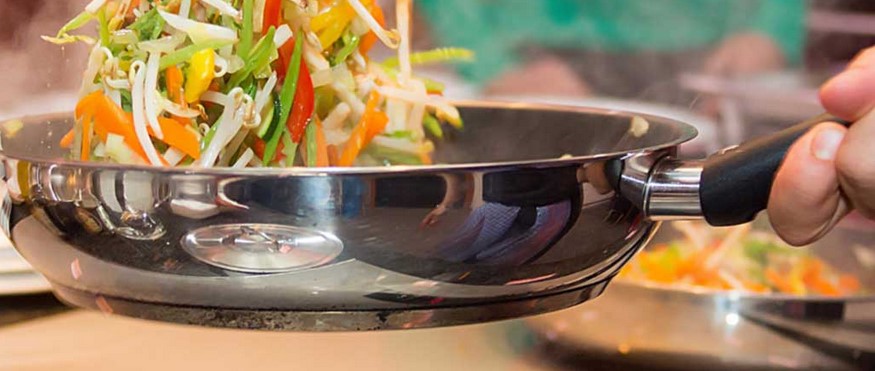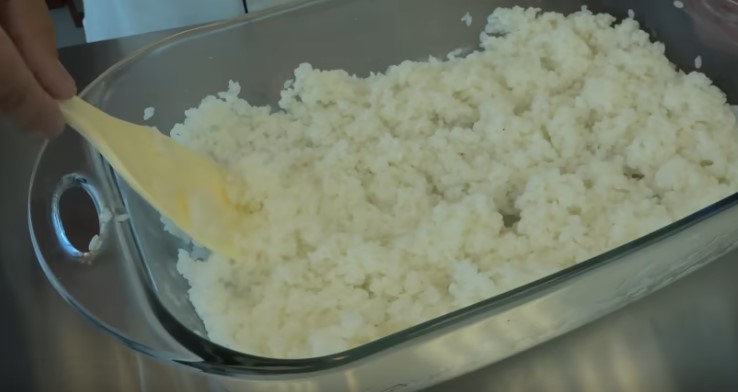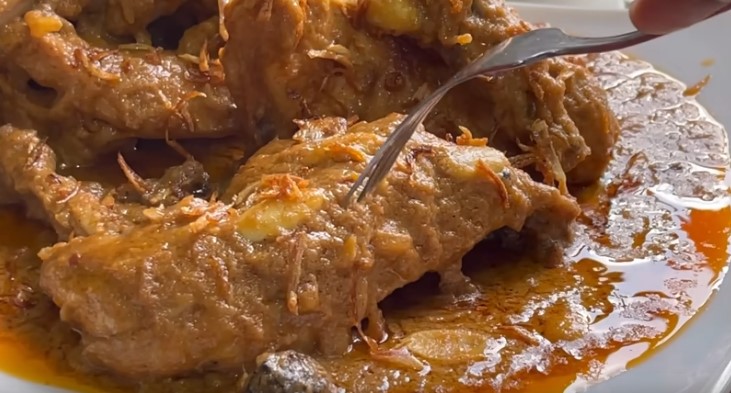The best cookware to use for health reasons has been a hotly disputed topic, especially in recent years. Even compounds like Teflon and PFOA, which are widely used in cookware, have been shown to have negative long-term impacts on health. Here we go through What is the Safest Cookware for Your Health.
So, then, what is the safest cookware for your health?
Unfortunately, there isn’t a single type of cookware available that can use simply and effectively without posing any safety risks.
Materials to Avoid Using in Cookware
You should steer clear of the following cookware materials.

Contents
Aluminum
The popularity of aluminum cookware is attributed to its portability, lightweight, and simplicity of maintenance. Aluminum exposure on a daily basis is typical. The bad news is that scientists don’t yet precisely know how much is harmful, although it can be toxic on some levels.
It may be even more difficult to hear this, but some studies have connected aluminum exposure to brain diseases like Alzheimer’s disease.
Non-Stick
Cookware is a non-stick well-liked alternative, and it is often constructed of PFOA or PTFE. Perfluorooctanoic acid, also known as C8, is the substance in PFOA, whereas polytetrafluoroethylene is the substance in PTFE. It is currently protected by a patent under the name Teflon, which you are certainly familiar with.
Unfortunately, these non-stick products as well as more conventional ones are not entirely secure. Many people get “Teflon flu,” which is brought on by breathing in fumes from Teflon that has been cooked to extremely high temperatures.
Cookware Materials That Are Generally Safer
Here are some alternatives that are generally safer now that you are aware of the risks associated with aluminum and non-stick.
Thermalon
Traditional non-stick materials don’t seem to be as safe as ceramic-based materials like Thermalon. A sand variant called Thermalon uses silicon dioxide in place of PTFE. But be aware that these materials pose questions concerning heavy metals and nanoparticles.
According to one study, certain kinds of malignant lesions are related to titanium dioxide nanoparticles. Use with caution as we can’t say for sure whether Thermalon produces titanium dioxide nanoparticles just yet.
Ceramic Enamel
Cookware with a porcelain enamel covering is often made of cast iron. Studies on porcelain enamel have mostly resulted in the finding that just a few brands are secure. What should worry you is whether it contains any traces of lead or cadmium.
Cookware from less expensive manufacturers frequently contains significant quantities of lead. So be careful if you’re seeking affordable choices. In the end, porcelain enamel is still a more secure material than PTFE or PFOA. However, you will discover better alternatives below.
Safest Materials for Cookware
Here are the categories of cookware you should favor the most after reading about the less desirable choices.
Be aware that there is no one ideal material for cookware. There hasn’t been one yet that has passed all safety tests. Here are your top options based on what is currently available on the market.
Stoneware
You ought to think about using this choice for bakeware. There is currently no research connecting stoneware to toxicity.
Stoneware is frequently recognized as a fantastic substitute for traditional bakeware, such as aluminum baking sheets, even if it takes some getting used to. It’s perfect for grilling fruits, veggies, and baked items like cookies. Even kitchenware like bread pans is made of stoneware.
Even though it’s hard to clean, it nevertheless adds flavor to meals and makes for a fantastic cooking experience. Additionally, they are really durable; if you only know how to take care of them, they will essentially last your entire life.
Ceramic
It might surprise you to learn that ceramic cookware consistently receives top marks for user safety. Ceramics understands not to absorb food substances that are placed on it.
Ceramic cookware is simple to heat uniformly and is suitable for use in the dishwasher, oven, microwave, and stove. The simplicity of cleaning ceramic is another benefit.
Even cleaning pads can use without endangering the surface. You must be careful with porcelain since it does have a tendency to shatter easily.
Cast Iron
Due to its propensity for being non-stick, cast iron is a fantastic choice for pan-frying and preparing meat. It may evenly heat your meal while assisting in taste retention. Additionally, you may use it on your cooktop and oven.
It does seep into food, but since it increases the amount of iron in your diet, this is really a beneficial thing.
It’s amazing to season your Cast iron cookware before use in order for the surface to be non-stick. Just be careful not to use Brillo pads to clean cast iron cookware.
Glass & Corningware
Although it is not ideal for other kitchen tasks, Corningware is still a fantastic alternative for baking. This one works well as refrigerator storage as well. Additionally, it’s relatively for not being poisonous and is comparatively affordable.
Stovetop cooking in glass cookware works well without contaminating your meal. Of course, you have a higher chance of breaking it. Also, the price is higher.
Steel, stainless
As one of the most accessible and affordable solutions, this safe cookware option is a common one.
Stainless steel items always mention chromium and nickel levels in stainless steel alloy. Search for the number 18, a forward slash (/), and then a different number, such as 18/0, 18/10, or 18/8.
The first figure, 18, stands for chromium, and the second number, nickel levels. Remember that the nickel level should be as low as possible.
Several producers of stainless steel cookware offers Nickel-free cookware.
Nevertheless, be aware, that there are some issues with nickel and chromium leaching. This is particularly probable if you are cooking for an extended period of time, at a high temperature, or with acidic foods like tomatoes.
Conclusion
Most people use cookware on a regular basis, so it’s critical to choose what is the safest cookware for your health and it wisely while shopping. In the end, a mix of the safest materials is what finally determines which cookware to use. Generally speaking, classic non-stick should always avoid. Whenever possible, stay away from cooking at excessively high temperatures.
Of course, some cookware requires some getting to use, but if you stick with it long enough, you’ll learn how to utilize various types of cookware. I really hope that this post was helpful to you, and I wish you success in your search for the ideal cookware.
FAQs Is stainless steel safer to use than ceramic cookware?
FAQs
Is stainless steel safer to use for cooking than ceramic?
It does have a lower reactivity than stainless steel. Ceramic pans are much less prone to chip and scrape, which might release metal particles that are consuming people. Additionally, they withstand high temperatures better and don’t react poorly with foods that are acidic like vinegar or lemon. In the end, using ceramic cookware offers a cleaner cooking experience in terms of the flavor of the food you end up making and the safe cooking methods it encourages.
Does Teflon remain hazardous?
No. Teflon is no longer harmful due to the presence of PFOA. The most recent generation of goods employ a new, FDA-approved non-stick coating instead of this chemical and do not include it.
Is 304 stainless steel poisonous?
No, stainless steel doesn’t contain any toxic substances that might contaminate food, like lead or cadmium. A stainless steel pan’s surface is non-reactive, so it won’t react with acidic foods like tomatoes or citrus fruits to produce cancer-causing substances like polycyclic aromatic hydrocarbons (PAHs).
Are cheap pans secure and the Safest Cookware?
Some people think it’s a good idea to purchase inexpensive cookware, but there involve hazards. Sometimes cheap pans construct with stainless steel and might include dangerous metals like lead or cadmium. Additionally, they could be non-stick due to surface coatings like PTFE (polytetrafluoroethylene), which when heated, generates gases that could be harmful to human health and cause respiratory irritation in animals. Using stainless steel pots and pans is the safest method for you to protect your safety when cooking at home!
Please read this page if you’re seeking the safest cookware under $100.
Are inexpensive pans safe?
Buying cheap cookware may seem like a smart idea to some individuals, but there associate some risks. Cheap pans may not make of stainless steel and could include harmful elements like lead or cadmium. Additionally, they might not attach because of coatings on the surface like PTFE (polytetrafluoroethylene), which, when heated, releases gases that could be dangerous to human health and irritate animal respiratory systems. The best way for you to preserve your safety when cooking at home is to use stainless steel pots and pans!
If you’re looking for the safest cookware under $100, please read this page.
You may also read: How to Clean Le Creuset Grill Pan

